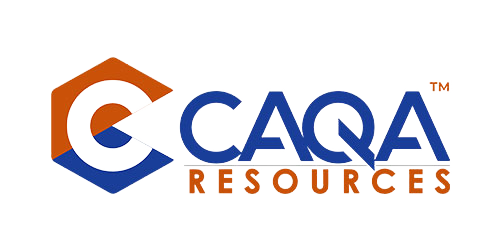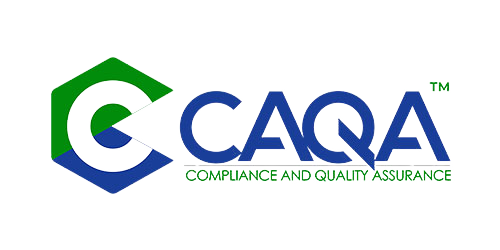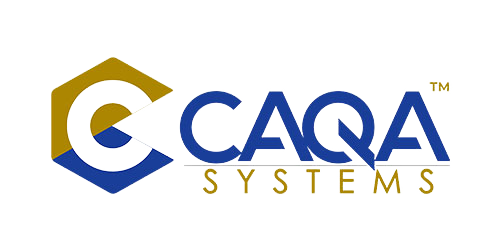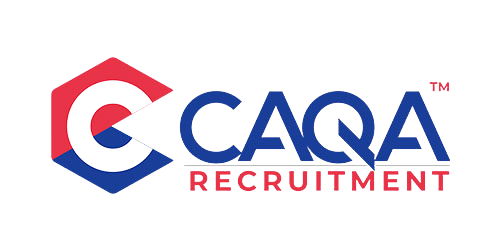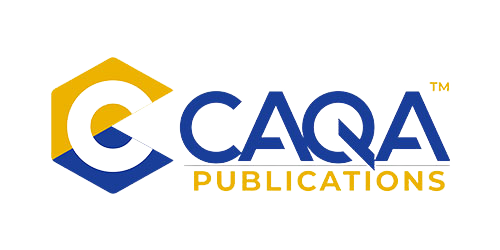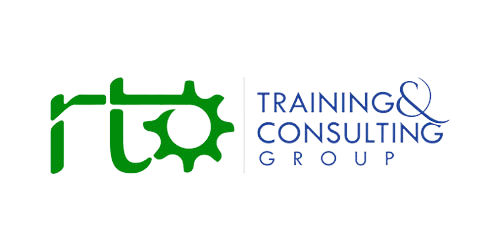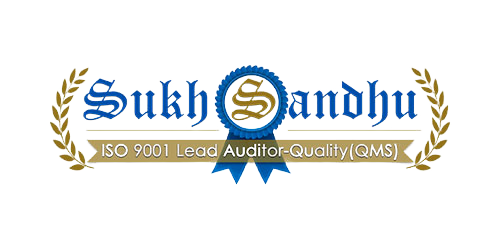Maintaining robust training and assessment resources, facilities, equipment, and staffing is crucial for any Registered Training Organisation (RTO) operating under the Standards for Registered Training Organisations (RTOs) 2015. These obligations are not optional; they are embedded in the regulatory framework designed to uphold the quality and integrity of Australia’s vocational education and training (VET) sector. While collaborations and resource-sharing arrangements can be beneficial, each RTO must still be able to individually demonstrate compliance with all relevant clauses of the Standards. In particular, Clause 1.3 stipulates that RTOs must have sufficient resources and facilities that meet the needs of their learners, regardless of the mode of delivery. Furthermore, Clauses 2.3 and 2.4 address third-party agreements, clarifying the requirement for written arrangements and timely notifications to the Australian Skills Quality Authority (ASQA). This article explores the fundamentals of maintaining training and assessment resources, facilities, equipment, and staffing, discusses why each RTO must meet these requirements independently, and examines how resource sharing constitutes a third-party agreement that must be declared under the Standards and associated legislative requirements.
Building a Strong Foundation: Training and Assessment Resources
A strong foundation of training and assessment resources begins with materials that are current, relevant, and aligned to the training packages or accredited courses on an RTO’s scope of registration. One of the key compliance requirements highlighted in the Standards for RTOs 2015 is that each RTO must ensure all resources are accessible to learners and that these resources are updated to reflect changes in training packages, industry requirements, or best practices. For instance, if an RTO delivers qualifications in aged care, the training materials must incorporate the most recent guidelines for person-centred care, reflect contemporary industry practice, and include valid assessment strategies that cover each unit of competency. In addition, Clause 1.3 also requires RTOs to verify that such resources remain sufficient for the size and diversity of their learner cohort, whether that cohort is studying on campus, online, or a blend of both. This verification is often achieved through internal or external validation processes, where trainers, assessors, and industry experts collectively evaluate the adequacy and currency of resources.
Facilities and Equipment: Ensuring High-Quality Learning
Facilities and equipment form the second pillar in ensuring a high-quality learning experience. Adequate physical or virtual facilities support learners in acquiring practical skills, participating in simulated activities, and engaging in collaborative projects. For qualifications such as automotive, construction, or engineering, the RTO must have access to well-equipped workshops or simulated environments that accurately reflect real-life work conditions. Similarly, for healthcare-related courses, there may be a requirement for simulated wards or laboratory environments stocked with the necessary equipment and consumables. These spaces need to be properly maintained and configured to accommodate the maximum number of learners. If an RTO intends to deliver training to a large cohort, it must demonstrate that these facilities can facilitate concurrent access to equipment without compromising safety standards or learning outcomes. ASQA will often check these facilities during audit visits to ensure they comply with the Standards, Workplace Health and Safety legislation, and any other relevant state or territory requirements. In an online delivery context, facilities translate to digital platforms, learning management systems, and virtual collaboration tools. Although intangible, these virtual spaces must still meet Clause 1.3 by guaranteeing that all learners have reliable access to resources and can engage in effective learning activities.
Staffing: A Critical Component
Staffing is equally critical. Each RTO is responsible for employing or engaging trainers and assessors who possess the requisite qualifications under the Standards for RTOs 2015. Commonly, this includes holding the current Certificate IV in Training and Assessment (TAE40122 or its successor) or higher-level qualification in adult education, as well as industry-relevant credentials. Trainers and assessors need to maintain industry currency, ensuring that their skills and knowledge align with current workplace practices. Regular professional development activities, such as attending industry conferences, undergoing refresher training, or undertaking supervision by more experienced practitioners, help to maintain these standards. Clause 1.13 of the Standards outlines the specific requirements for trainer and assessor competencies, reinforcing that each individual delivering training or assessment must meet the specified benchmarks. Furthermore, if an RTO employs trainers who have not yet obtained the full qualifications but are working under supervision, Clause 1.17 mandates that the RTO implement robust supervision arrangements to ensure the quality of delivery is not compromised. It is, therefore, essential that RTOs document these arrangements thoroughly, detailing how supervision is conducted, what evidence is collected, and how supervision addresses any competency gaps.
When Resource Sharing Triggers a Third-Party Agreement
Although each RTO must independently satisfy these obligations, there are situations in which RTOs choose to share training and assessment resources, facilities, or staffing with another provider. This often occurs among sister colleges or collaborative partners seeking to maximise efficiency and provide learners with a broader range of course offerings. While such collaborations may appear convenient, it is crucial to recognise that sharing resources typically triggers a third-party arrangement under Clause 2.3 of the Standards. This clause specifies that if an RTO engages a third party to deliver services on its behalf or if two RTOs share resources in a manner that impacts training or assessment outcomes, a formal agreement must be executed. This written arrangement must precisely delineate the responsibilities of each party, the processes for quality assurance, the scope of the services delivered, and how each RTO will maintain compliance independently. As soon as this agreement is formed or dissolved, the RTO has 30 days to notify ASQA, as per Clause 2.4. ASQA uses this information to monitor and assess the risk profiles of each RTO, ensuring that obligations are transparent and that responsibilities are clearly understood.
Practical Example: Shared Classrooms and Staffing
In practical terms, imagine two RTOs delivering the same business qualification in a shared classroom. One RTO may have purchased high-quality assessment tools aligned to the latest version of the training package, while the other RTO relies on the same resources but has not formalised any arrangement to demonstrate ownership or valid licensing. In this scenario, the second RTO would be unable to establish a clear chain of compliance for its resources, thereby failing to meet Clause 1.3 requirements for having its own accessible and sufficient resources. If the arrangement between the two RTOs is not documented, it also raises concerns for ASQA about who holds responsibility for updating and validating the resources, managing any necessary customisations to suit a different learner cohort, and ultimately ensuring that each RTO meets its obligations. A lack of clarity can lead to both providers being found non-compliant if an audit reveals that neither can demonstrate undisputed control and adequacy of resources for their respective scopes.
Moreover, staffing arrangements can similarly trigger third-party considerations. For instance, if RTO A and RTO B share a pool of trainers and assessors who rotate between campuses, or if RTO A relies on RTO B’s staff to provide certain specialised training, the responsibility for verifying the qualification and industry currency of those trainers becomes less straightforward. Each RTO must ensure it has records proving that every trainer or assessor meets the requirements of Clause 1.13 (or Clauses 1.16–1.17 if a supervision arrangement is in place). The RTO that “borrows” the trainer cannot simply rely on the other RTO’s assurance; it must independently check and maintain its own documentation that the trainer is duly qualified, current, and competent to deliver or assess that particular qualification or unit of competency. If no formal agreement is in place, and there is no clarity about the monitoring of trainer qualifications or currency, ASQA can deem the arrangement to be lacking in governance. As a result, both RTOs risk being sanctioned if found in breach of the Standards.
Declarations and the Need for Transparency
Declarations of third-party agreements are thus critical for regulatory transparency, as ASQA uses these declarations to understand each RTO’s service delivery context, the extent of shared responsibilities, and the potential risks involved. Undeclared arrangements may mislead the regulator into believing that an RTO independently maintains all of its resources and staff when, in fact, it is partially reliant on another entity. This lack of transparency can inflate the risk profile of an RTO. If discovered during an audit, unreported or poorly managed third-party arrangements can result in a range of penalties, from rectification directives to more severe actions such as suspension or cancellation of registration.
Accountability and Autonomy
Another crucial reason for ensuring that third-party arrangements are both declared and clearly structured is that each RTO is ultimately responsible for ensuring its compliance. Even if a portion of the training delivery or assessment design is outsourced, or if a single set of resources is shared among multiple campuses with distinct RTO codes, the primary RTO cannot shift accountability to its partner in the event of non-compliance. Clause 2.3 explicitly states that the RTO is fully responsible for the quality of the training and assessment provided on its behalf, regardless of any third-party arrangements. Therefore, if a shared facility is not maintained to the appropriate safety standards, or if shared assessment resources have not undergone proper industry consultation, it is the RTO’s registration that is at stake. The same principle applies to licensing or copyright issues: if an RTO uses copyrighted materials sourced from another organisation without holding a valid licence, it may be found in breach of both the Standards and Australia’s intellectual property laws.
Maintaining individual autonomy also ensures that each RTO can tailor its resources and delivery strategies to the unique needs of its learner cohorts. For example, an RTO specialising in international education must comply with the Education Services for Overseas Students (ESOS) Act 2000, which includes additional responsibilities such as providing suitable support services, ensuring CRICOS registration for applicable courses, and meeting the specific cultural or language needs of overseas learners. If that RTO attempts to simply “borrow” training resources developed for domestic learners at another RTO, it may inadvertently ignore these extra requirements, leading to shortfalls in its compliance. Declaring a third-party arrangement encourages both parties to articulate these differences and plan how resources will be adapted, validated, or supplemented to meet each cohort’s requirements.
Potential Benefits of Shared Resource Strategies
Although resource sharing can present risks, there are also benefits if done correctly. Well-structured agreements enable economies of scale: RTOs can pool resources to invest in more sophisticated equipment or collaborate on high-quality courseware that incorporates thorough industry consultation. By sharing costs, RTOs may be able to develop advanced simulation tools or learning management system enhancements that would be too expensive for a single organisation to finance. Moreover, for niche qualifications with lower enrolments, resource sharing can help ensure that the financial and logistical burden of maintaining specialised facilities (such as advanced engineering labs or medical simulation centres) does not fall exclusively on one provider. This can be particularly advantageous in regional areas, where limited resources and dispersed learner populations make it impractical for each RTO to operate fully independent facilities.
Best Practices and Risk Management
Nevertheless, if RTOs choose to pursue shared resource strategies, best practices dictate thorough due diligence, transparent contracts, and comprehensive risk management. For instance, the agreement might state that RTO A owns the original assessment tools and is responsible for maintaining their currency and alignment to any changes in the relevant training package. RTO B then may have a licence to use these tools for a specified period, with responsibilities including implementing any modifications required to meet their own learner cohort’s needs. The agreement should outline how often validations will occur, who will participate in them, and how outcomes will be recorded. Likewise, in the scenario of shared staff, the contract must detail how qualifications and professional development records will be maintained and exchanged to ensure that each RTO can produce evidence of compliance at audit.
In addition to formal agreements, both RTOs involved in resource sharing should maintain independent records and documentation. Each must show evidence of ongoing compliance in its own context. For example, RTO A might keep a record of all validations undertaken, noting any adjustments or improvements to resources. RTO B, on the other hand, must retain logs that demonstrate how it reviewed the resources’ suitability for its learner base, how it monitored staff qualifications and the specifics of any local adaptations necessary for the environment where it operates. This dual record-keeping not only satisfies regulatory requirements but also helps to prevent confusion in cases of dispute or audit. If an RTO cannot clearly demonstrate ownership, licensing, or the reason behind certain modifications to an assessment resource, there is an increased risk of non-compliance.
Intellectual Property and Copyright
Another key factor to consider is intellectual property and copyright. Under Australian Copyright Law, training and assessment materials are protected works. If an RTO purchases these materials from a third-party developer or from another RTO, it must hold a valid licence to use them. Sharing such materials without the correct permissions or failing to update the licensing agreement in line with the arrangement can have serious legal implications. It is not sufficient for an RTO to assume that because materials are used within the same group of organisations, a single licence covers everyone. In most cases, licensing agreements are quite explicit about who can use the material and under what conditions. Overlooking this detail may not only violate Clause 1.3 of the Standards but also breach intellectual property laws, potentially leading to legal disputes, financial penalties, and reputational damage.
Workplace Health and Safety Considerations
Furthermore, when resources are shared, each RTO must ensure that the shared facilities comply with Workplace Health and Safety legislation. Suppose multiple RTOs use the same workshop for practical training in automotive or engineering. In that case, they need to clarify who is responsible for risk assessments, safety drills, maintenance schedules, and overall site management. If no single entity is clearly identified as being in charge, accidents or safety incidents could escalate the liability for both providers, as each might claim the other was responsible. Ensuring that the third-party agreement covers these operational details is another important safeguard.
Oversight of Shared Staffing
Staffing arrangements equally require careful monitoring. For instance, it may be beneficial for an RTO that delivers early childhood education to borrow a specialised trainer from another provider who has expertise in advanced child psychology. However, the borrowing RTO must thoroughly verify that this trainer’s qualifications and industry experience meet the standards. The RTO must also document how it satisfies ongoing professional development and currency requirements. Relying on the partner organisation’s records alone does not remove the borrowing RTO’s obligation to produce evidence of compliance at its audit. If the trainer’s credentials are questioned, the borrowing RTO must be prepared to present all the necessary evidence, even if the trainer is under an employment contract with another entity.
Maintaining the Ability to Deliver Training Independently
Underpinning all these considerations is the principle that each RTO must maintain the ability to deliver high-quality training and assessment in its own right. The Standards, supported by the National Vocational Education and Training Regulator Act 2011, emphasise that registration is granted to individual RTOs based on their capacity to meet regulatory requirements. Although forming partnerships or consortia can strengthen resource capability, any sign that an RTO is reliant on external providers to the extent that it cannot function independently may raise a red flag for ASQA. This is especially relevant if an RTO’s identity, staff, or resources are so entangled with another entity that, if audited separately, the RTO could not demonstrate compliance. Clarity, documentation, and transparency are therefore essential to maintaining not only compliance but also the quality and reputation of Australia’s VET sector as a whole.
Developing a Comprehensive Risk Management Plan
In light of these complexities, it is advisable that RTOs contemplating resource sharing develop a comprehensive risk management plan before entering into any agreement. This plan could involve identifying the scope of resources or services to be shared, assessing regulatory requirements, drafting a clear memorandum of understanding or service-level agreement, and building milestones for monitoring and evaluating the partnership. Where feasible, the RTOs should engage legal counsel, particularly if valuable intellectual property is involved. They should also conduct a detailed compliance check against Clause 1.3 to ensure that each RTO can confidently demonstrate that its facilities, resources, and staffing are sufficient for its learner cohorts. Clause 1.5 requires resources to reflect current industry practices and to have input from relevant industry stakeholders, so it is equally important that resource updates continue to occur, whether they are conducted jointly or independently.
Ongoing Monitoring and Internal Audits
Once an arrangement is up and running, each RTO should schedule regular internal audits to verify that the agreement is functioning as intended. In these audits, the RTO might check that training materials are still aligned with current training packages, that trainers remain qualified and professionally developed, that shared facilities meet safety standards and that any modifications or upgrades to resources are properly documented. Where issues are identified, the RTO should initiate prompt corrective actions, which may involve updating the written agreement, retraining staff, or carrying out additional validations. By embedding these checks into routine governance processes, the RTO can reduce the risk of non-compliance and ensure that the partnership remains beneficial for all parties involved, most notably the learners.
Regulatory Transparency and Third-Party Disclosures
From a broader regulatory perspective, declaring third-party agreements is not merely a bureaucratic requirement. It is a mechanism by which the regulator can maintain a clear picture of the training ecosystem, identifying potential risks, overlaps, or gaps. For example, if multiple RTOs share a single, complex piece of equipment—such as a flight simulator for aviation training—ASQA may wish to confirm that each RTO has adequate access to it and that the equipment is regularly maintained. Declaring these agreements also prevents misunderstandings. If a learner lodges a complaint, ASQA knows which RTO and which partner is accountable for rectifying any issues. Therefore, far from hindering collaboration, transparent third-party disclosures are a means to strengthen trust between the regulator, RTOs, and the public, showcasing that the sector operates with integrity and a clear sense of responsibility.
Ultimately, the question of why resource sharing must be declared as a third-party agreement and what should be disclosed can be answered by returning to the foundational principles of the Australian VET sector: quality, integrity, and learner protection. Each RTO is entrusted with the provision of qualifications that carry national recognition and significance. If resources, facilities, or staffing are compromised, learners may not receive the standard of education and training they expect, and the reputations of the RTO and the broader sector can be adversely affected. By insisting that RTOs independently meet their compliance responsibilities under Clause 1.3 and that they declare any third-party collaboration under Clause 2.3, the Standards for RTOs 2015 aim to maintain a transparent environment where every provider is individually accountable for the integrity of the qualifications it issues.
Maintaining training and assessment resources, facilities, equipment, and staffing in alignment with the Standards for RTOs 2015 is a core duty for every Registered Training Organisation. Clause 1.3 underscores the need for sufficient and accessible resources that are matched to an RTO’s scope of registration and learner cohorts, while Clause 1.5 reminds us that these resources must be valid, current, and reflective of industry consultations. Facilities must be capable of accommodating the practical and theoretical demands of each qualification, and staffing arrangements must satisfy the rigorous requirements for trainer and assessor credentials. Although sharing resources among multiple RTOs can be advantageous in terms of cost, efficiency, and breadth of offerings, this collaboration invariably constitutes a third-party agreement that must be properly formalised, monitored, and declared to ASQA within 30 days. Such transparency ensures that each RTO retains its autonomy and accountability, as mandated by the National Vocational Education and Training Regulator Act 2011, the ESOS Act 2000 (where relevant), intellectual property legislation, and Workplace Health and Safety laws. By adhering to these frameworks, RTOs can simultaneously uphold their regulatory obligations and leverage the benefits of collaborative partnerships, ultimately contributing to a strong, reputable, and learner-focused VET sector in Australia.
Frequently Asked Questions (FAQs)
1. What is a third-party agreement in the context of RTO operations?
A third-party agreement is a formal arrangement where an RTO engages another entity (or collaborates with another RTO) to deliver services on its behalf that impact training or assessment outcomes. Under Clause 2.3 of the Standards for RTOs 2015, any such arrangement must be documented and declared to ASQA within 30 days.
2. Do I always need a separate licence for shared training resources?
Yes. Each RTO must maintain clear ownership or valid licensing for its training and assessment resources. If the resources are shared among multiple RTOs, each must have its own licence or a properly documented arrangement that demonstrates compliance with copyright and intellectual property laws.
3. How can I ensure staffing arrangements are compliant when sharing trainers?
You must verify that all trainers and assessors meet the qualification and industry currency requirements under the Standards for RTOs 2015. Each RTO needs to maintain its records of trainer credentials, professional development activities, and any applicable supervision arrangements.
4. What are the risks of not declaring shared arrangements to ASQA?
Failure to declare third-party agreements can lead to increased regulatory scrutiny, penalties, or even suspension or cancellation of registration. Undeclared arrangements obscure accountability and can inflate an RTO’s risk profile during audits.
5. Can resource sharing reduce overall operational costs for RTOs?
Yes, if done correctly. Collaborating on expensive equipment or developing high-quality courseware can be cost-effective. However, each RTO must still meet its individual compliance obligations and formally document any shared arrangement to ensure regulatory requirements are satisfied.









